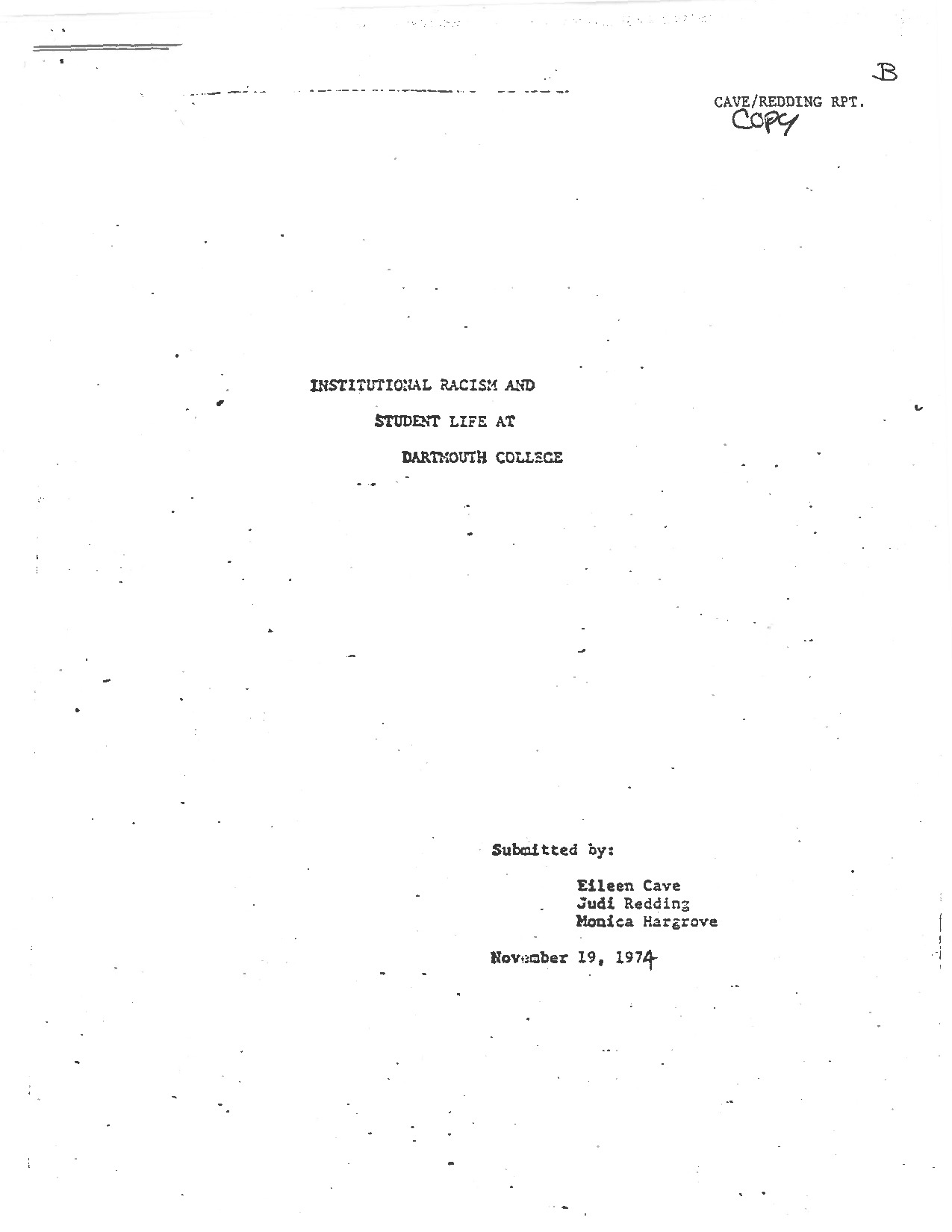To Be Black AND Woman: The Redding Report, Afro-American Society and Student Mobilizing
During her time at the college, Monica would become an active and engaged member within the Afro-American Society and utilize its shared community space as she navigated the stark transition from life as black woman in Atlanta, GA to Hanover, New Hampshire.
The Afro-American Society was formed in 1966 and was officially recognized as a student organization in the Spring of 1969; it served as a forum and organization for the Black student community at Dartmouth; one that is aware of the concerns and positionality of the Black student under the white institution of Dartmouth. The Afro-American Society would be placed in Cutter Hall, a location adapted to house and become an intellectuall and cultural center for black students, yet women were still not allowed to live in the hall (now called The Shabazz Center for Intellectual Inquiry) until 1976—the fall after Monica graduated.
Nevertheless, Hargrove's transition to Dartmouth proved successful and during her junior year, in collaboration with two other black women in her class, she would make a significant contribution to the black Dartmouth community with their presentation of the "Redding Report" to Dartmouth administration.
Authored by Eileen Cave, Monica Hargrove, and Judi Redding and officially titled "Institutional Racism and Student Life at Dartmouth,” it emulated the style of the "McLane Report" [authored by the Trustees Committee on Equal Opportunity in 1968] and served as a critique of student life, exposing the realities of the Black student experience at Dartmouth. Taking on the same format of a report, it structurally commented on administrative oversight and the lack of accountability in fully realizing the promises of the "McLane Report." The publication of the "Redding Report" by three Black, female students in 1974 — only two years after coeducation — the report served as a distinctive and divergent form of student protest that placed the student voice in direct conversation with administrative decision-making to amplify the Black student’s voice, subvert the exclusion of administrative action, and set a precedent for student protest mobilizing.
Later, the "Redding Report" was reproduced and disseminated by the Afro-American Society, along with other allied organizations like the Interracial Student Group, to reach and inform the members of the student body and administration; this literature distribution protested notions of exclusion and put the experiences and voices of Black and native students at the forefront for the student body to consume and reckon with internally.
"A visual indicator of this report generating shifting notions of protesting strategy are seen in the two differing styles of 'The Redding Report.' The first and original formatting, in the typical report fashion, utilized a typewritten, 21-page essay form that from its beginning to end, detailed the shortcomings of 'McLane Report’s' implementation, common campus-wide discrimination practices and proposed solutions to combatting institutional inequity; this is the style found in the President’s Records (Call Number DP-13) as means of emulating and communicating within in the conventional format of the administrative office in pushing for accountabilty." (blog post)
-Kiara Cannon 'Many Paths for Persistent Protest'


